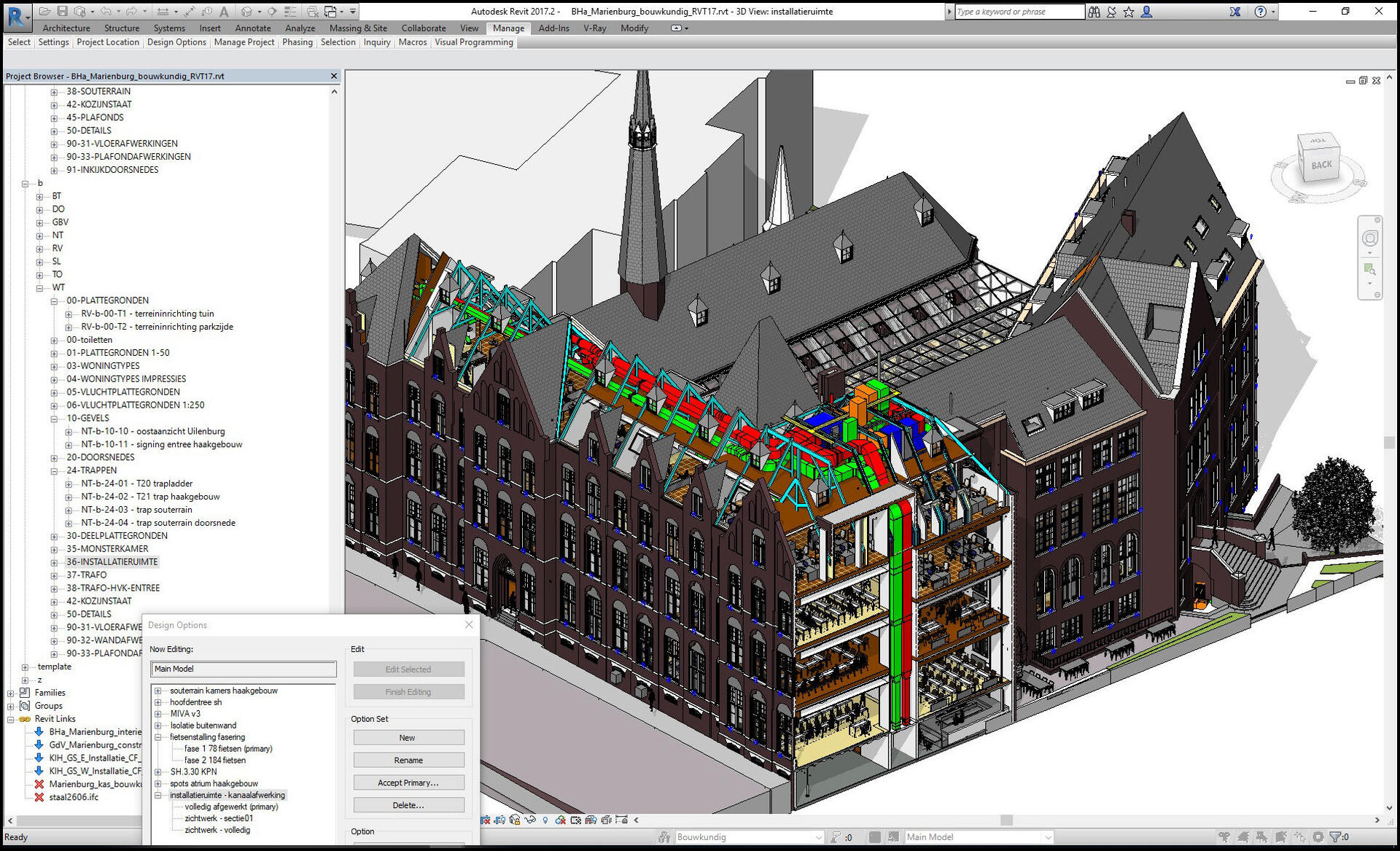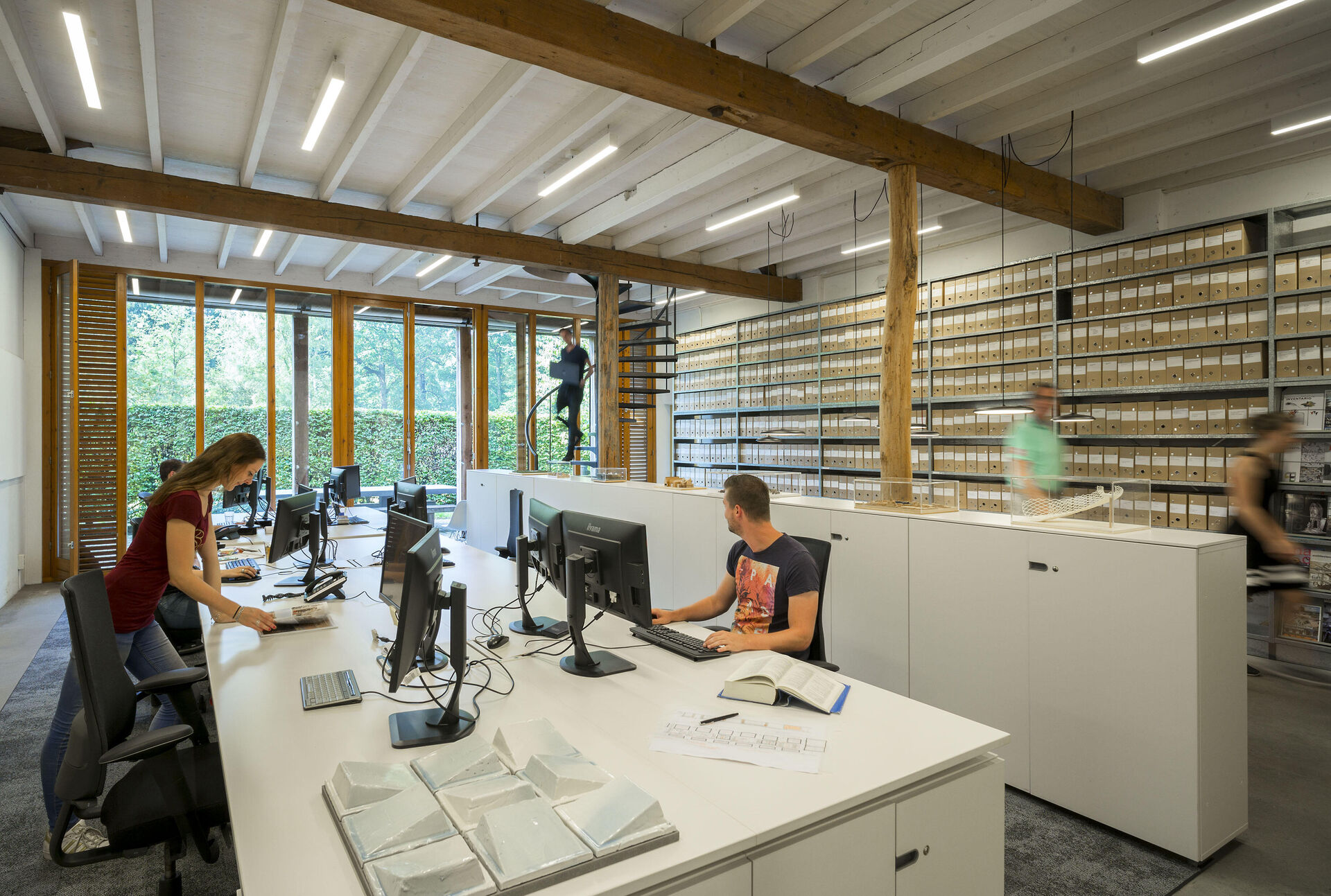In order to improve integral alignment, BiermanHenket works out its projects in a Building Information Model (BIM). In consultation with clients and project partners, the necessary information for the design, building and/or maintenance stages is determined for each project. The national BIM-based ILS standard is used as a starting point.
In order to use the capabilities of BIM to the greatest extent possible, we focus on three core values:
1. Producing a digital prototype of the building.
2. Centralising information.
3. Retaining information over time.
BiermanHenket continually works on improving its work processes, to enable it to respond to new developments. The firm is leading the way in applying BIM to the renovation and transformation of existing buildings. BIM is used, amongst other things, to specify and record the monumental values of a building.
Furthermore, BIM is used to gain insight into the sustainability of the buildings the firm works on. The model can also be used as a materials database, giving optimum visibility of the materials used and their reusability in the future. This means the model contributes to a sustainable circular future. Working in a BIM environment improves the quality and efficiency of the design process, the associated communication process, the execution process and the building maintenance process.
In the design phase, the clients, users and other stakeholders gain direct three-dimensional visibility of the spatial quality of the design. In order to achieve a transparent process, cooperation is organised through a document server. For instance, the BIM model can be viewed and commented on online. By working three-dimensionally and in an integrated way in a BIM environment, the building engineering work, the systems technology and the constructional subsystems can be optimally aligned.
In the operational phase, the BIM model can be connected to components in the building and the building management system. This provides up-to-date information about the behaviour of the building and its users, which can be used for management decisions. The available information, which will always be up-to-date, can be used to inform policies on the use and operation of the building, which in turn benefits sustainability.
‘We lead the way in applying BIM to the renovation and transformation of existing buildings, while at the same time continually working to improve our work processes to enable us to respond to new developments.’

